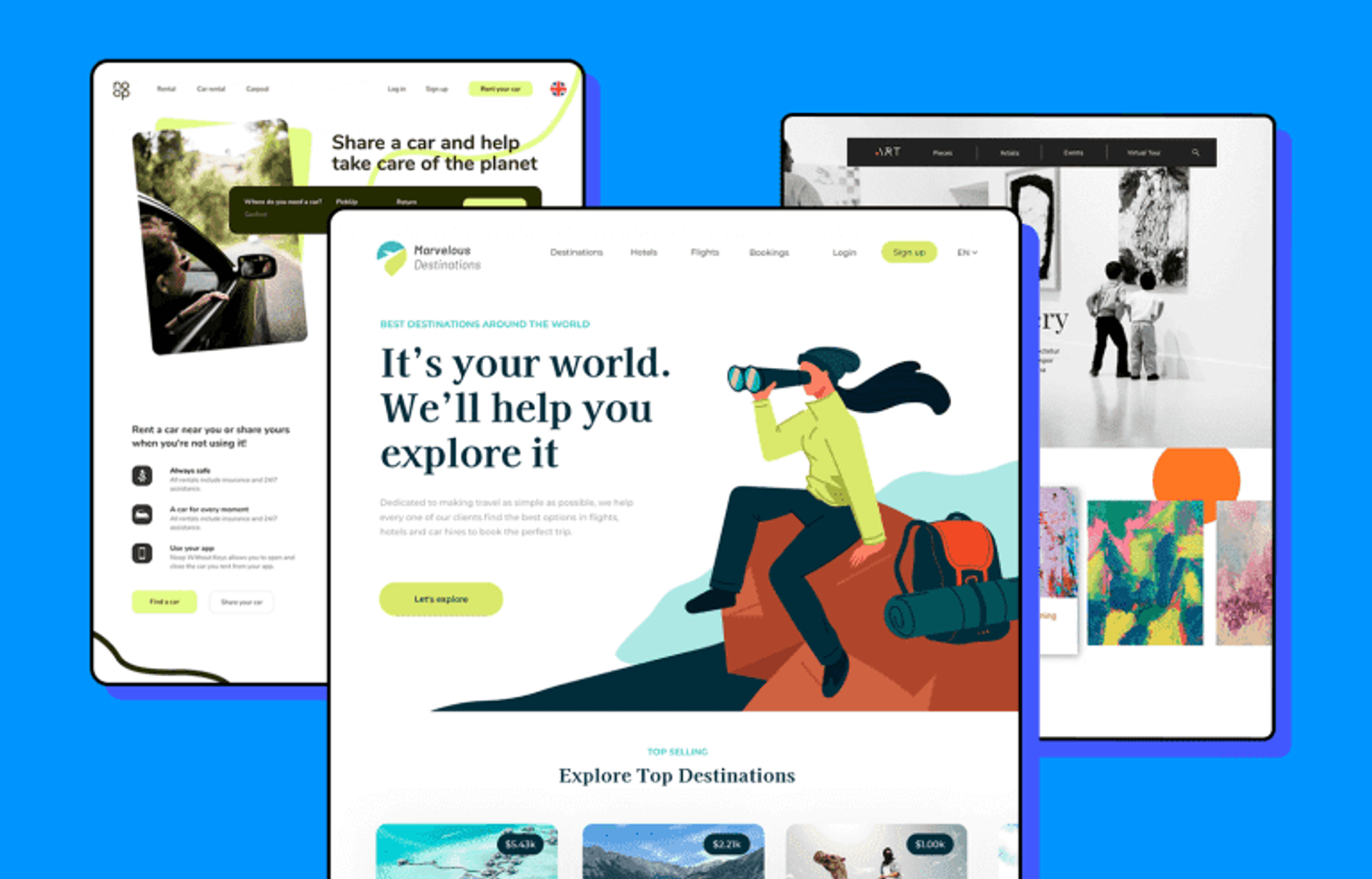Learn why brands are switching to impactful happy web design strategies.
Learn why brands are switching to impactful happy web design strategies.
Blog Article
Create a Balanced Online Experience With All Natural Web Design
In today's digital landscape, producing a balanced online experience with alternative internet style is important for satisfying the varied requirements of individuals. By focusing on access and straightening content technique with individual preferences, organizations can considerably improve interaction.
Comprehending All Natural Website Design
What does it suggest to take on an all natural strategy to website design? An all natural strategy stresses the combination of different aspects to create a cohesive online experience. This methodology takes into consideration not just visual elements but also functionality, usability, and the psychological influence of the web site on its users. By viewing a website as an interconnected community, developers can make certain that every element-- visual layout, material, navigation, and interactivity-- works sympathetically to meet customer demands.

Integrating an alternative point of view entails understanding the target market and their specific demands, choices, and behaviors. It calls for an analysis of exactly how customers communicate with various components of the site and just how these interactions affect their overall experience. This strategy also thinks about the more comprehensive context in which the website runs, consisting of brand identity, advertising approaches, and competitive landscape.
Eventually, a holistic method to internet layout causes a more engaging and efficient on-line presence. By prioritizing the user journey and promoting a smooth experience throughout all touchpoints, developers can develop web sites that not only capture interest yet also motivate continual communication and satisfaction. This extensive method advertises long-lasting success and promotes brand name commitment.
Key Principles of User Experience

One crucial principle is use, which stresses the significance of straightforward navigating and clear performance. Websites need to be easy to navigate, enabling users to situate info quickly. This is very closely linked to consistency, where layout aspects, such as switches and menus, should stay uniform throughout the site to boost familiarity and convenience of use.
An additional significant concept is feedback, making sure that users are educated about their communications. Whether through visual signs or notifications, comments enhances a sense of control and satisfaction. Furthermore, the concept of pecking order determines that info should be arranged logically, directing customers through web content successfully.
Lastly, psychological style plays an important role in UX. By stimulating positive emotions through aesthetics and interactions, developers can develop memorable experiences that foster individual commitment - website development consulting. By adhering to these concepts, internet developers can develop all natural experiences that reverberate with customers and accomplish their purposes
Relevance of Ease Of Access
Access is an essential element of website design that ensures all users, regardless of their capabilities or specials needs, can connect with digital content efficiently. By prioritizing availability, web designers produce comprehensive environments that provide to varied individual requirements, improving general individual experience.
An accessible internet site complies with established guidelines, such as the Web Content Access Guidelines (WCAG), which suggest methods like offering text alternatives for non-text web content, making certain enough shade comparison, and allowing keyboard navigating. These techniques not just serve users with disabilities, such as aesthetic or acoustic disabilities, but additionally profit other user teams, consisting of those with situational restrictions or older adults.
In addition, the value of availability extends past honest considerations; it also influences company outcomes. A comprehensive site can reach a more comprehensive audience, ultimately bring about enhanced engagement and conversions. Furthermore, ease of access conformity minimizes the risk of lawful consequences connected to discrimination.

Integrating Material Approach
Producing a comprehensive electronic setting naturally results in the requirement of a durable material strategy that lines up with individual demands. A reliable web content Clicking Here strategy functions as the backbone of holistic website design, making sure that details is not just accessible but additionally engaging and relevant. It requires a deep understanding of the target market, including their choices, actions, and possible obstacles to find more information gain access to.
To integrate a material method successfully, organizations must focus on user-centric content creation. This can be achieved via thorough audience research study, which notifies the sorts of material that will resonate with customers. In addition, material must be structured realistically, using clear headings, bullet points, and succinct language to improve readability.
Routine audits of content efficiency will assist in refining strategies, making sure the content stays fresh and straightened with individual assumptions. By prioritizing a natural web content strategy, organizations can produce a well balanced online experience that promotes interaction and accessibility for all customers.
Determining Success and Involvement
While a well-executed web content method develops the foundation of holistic website design, determining success and involvement is crucial for assessing its efficiency and directing future enhancements. Trick efficiency signs (KPIs) such as web page sights, bounce rates, and typical session duration supply measurable insights into user behavior. These metrics highlight which material reverberates most with individuals and where potential rubbing points might exist.
Furthermore, qualitative procedures, such as user feedback and surveys, can provide deeper understandings into customer satisfaction and interaction degrees. Tracking social networks interactions and conversion prices also aids assess the efficiency of web content in driving preferred activities, whether that be acquisitions, sign-ups, or info demands.
Making use of devices like Google Analytics, heatmaps, and A/B testing can improve understanding of individual communication patterns and choices. This data makes it possible for internet developers and content strategists to iterate on their styles, making weblink sure that the on-line experience remains user-centered and straightened with company objectives.
Conclusion
By prioritizing individual requirements and accessibility, designers can produce interconnected environments that boost involvement and satisfaction. A well-aligned web content approach better adds to a natural user experience, while constant feedback devices are crucial for cultivating commitment.
Report this page